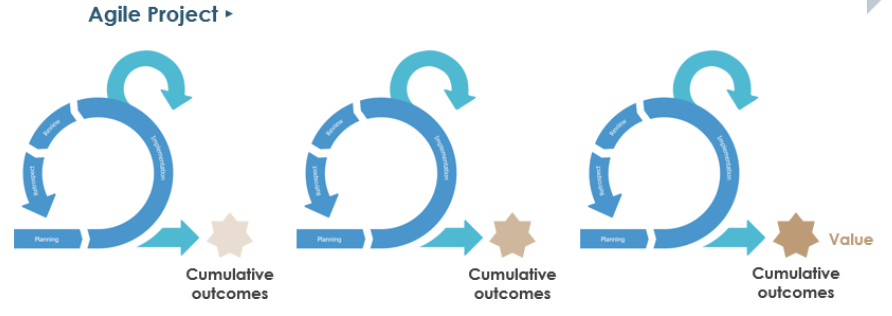Navigating Agile Seas: A User Story Odyssey in E-commerce Development
Introduction
Embarking on the journey of developing a new e-commerce website is an exciting but complex endeavor. In the realm of agile development, where adaptability and collaboration reign supreme, the process unfolds in a series of well-defined stages. Each stage, intricately linked, focuses on the heartbeat of the project—the user story. From the inception of the project to the continuous improvement cycles, our agile odyssey is a testament to flexibility, customer-centricity, and iterative progress.

A User Story in Agile Development Process
Let’s dive into the agile development process! Imagine we’re working on developing a new e-commerce website. Here’s a simplified walkthrough:
-
Project Initiation:
- Identify the need for a new e-commerce platform.
- Create a high-level vision for the project.
- Form a cross-functional team with roles like developers, designers, and testers.
-
Backlog Creation:
- Work with stakeholders to gather initial requirements.
- Break down requirements into user stories.
- Prioritize the user stories based on business value and dependencies.
-
Sprint Planning:
- Select a set of high-priority user stories for the first sprint.
- Break down user stories into tasks.
- Estimate the effort required for each task.
-
Development (Sprint):
- Developers work on their assigned tasks.
- Designers create the necessary UI/UX elements.
- Regular communication within the team through daily stand-up meetings.
-
Testing:
- Testers verify that the implemented features meet the acceptance criteria.
- Developers fix any bugs or issues identified during testing.
-
Review and Demo:
- At the end of the sprint, the team holds a review and demo session.
- Stakeholders and team members provide feedback.
-
Retrospective:
- The team reflects on the sprint’s successes and challenges.
- Identify areas for improvement and adjust processes accordingly.
-
Repeat:
- Steps 3-7 are repeated for subsequent sprints.
- The product evolves incrementally with each sprint.
-
Release:
- After several sprints, the product reaches a state where it can be released.
- Conduct a final round of testing to ensure overall stability.
-
Feedback and Maintenance:
- Gather user feedback after the release.
- Continuous improvement based on user feedback.
- Ongoing maintenance and support.
Throughout this process, collaboration and flexibility are key. The agile methodology allows for adaptation to changing requirements and continuous improvement. It’s a dynamic and iterative approach that values customer feedback and delivers a product incrementally. How does this sound to you?
Here’s a simple table summarizing each stage of the agile development process related to a user story:
| Stage | Activities | Team Members Involved |
|---|---|---|
| Project Initiation | – Identify need for e-commerce platform
– Create high-level vision |
– Product Owner
– Stakeholders |
| Backlog Creation | – Gather initial requirements
– Break down into user stories – Prioritize |
– Product Owner
– Development Team |
| Sprint Planning | – Select user stories for sprint
– Break down stories into tasks – Estimate effort |
– Scrum Master
– Development Team |
| Development (Sprint) | – Developers work on tasks
– Designers create UI/UX |
– Developers
– Designers |
| Testing | – Verify features meet acceptance criteria
– Bug fixing |
– Testers
– Developers |
| Review and Demo | – Hold review and demo session
– Gather feedback |
– Stakeholders
– Development Team |
| Retrospective | – Reflect on sprint’s successes and challenges
– Identify areas for improvement |
– Scrum Master
– Development Team |
| Repeat | – Repeat stages 3-7 for subsequent sprints | – Entire Development Team |
| Release | – Final testing for overall stability | – Testers
– Developers |
| Feedback and Maintenance | – Gather user feedback
– Continuous improvement |
– Product Owner
– Development Team |
This table gives a snapshot of each stage, the activities involved, and the primary team members participating. How does this look?
Summary
In the agile development process for creating an e-commerce website, the journey begins with project initiation, where the need for the platform is identified, and a high-level vision is crafted with input from stakeholders and a dedicated product owner. The subsequent creation of a backlog involves breaking down requirements into user stories and prioritizing them based on business value. Sprint planning, led by a Scrum Master, selects high-priority user stories for a sprint, breaks them into tasks, and estimates effort.
The development phase sees cross-functional collaboration, with developers and designers working on tasks concurrently. Regular communication is maintained through daily stand-ups. Testing follows, where testers ensure that implemented features meet acceptance criteria, and developers address any identified bugs. The sprint concludes with a review and demo session, gathering feedback from stakeholders and team members.
The retrospective stage encourages the team to reflect on successes and challenges, identifying areas for improvement. The process iterates with subsequent sprints, incrementally evolving the product. Upon reaching a stable state, a final release is prepared, accompanied by thorough testing.
Post-release, user feedback is collected, and continuous improvement is pursued based on this input. The entire development team, led by the product owner, remains involved in this feedback loop. The agile approach allows for adaptability, flexibility, and ongoing maintenance, ensuring the e-commerce website meets evolving needs and standards.

